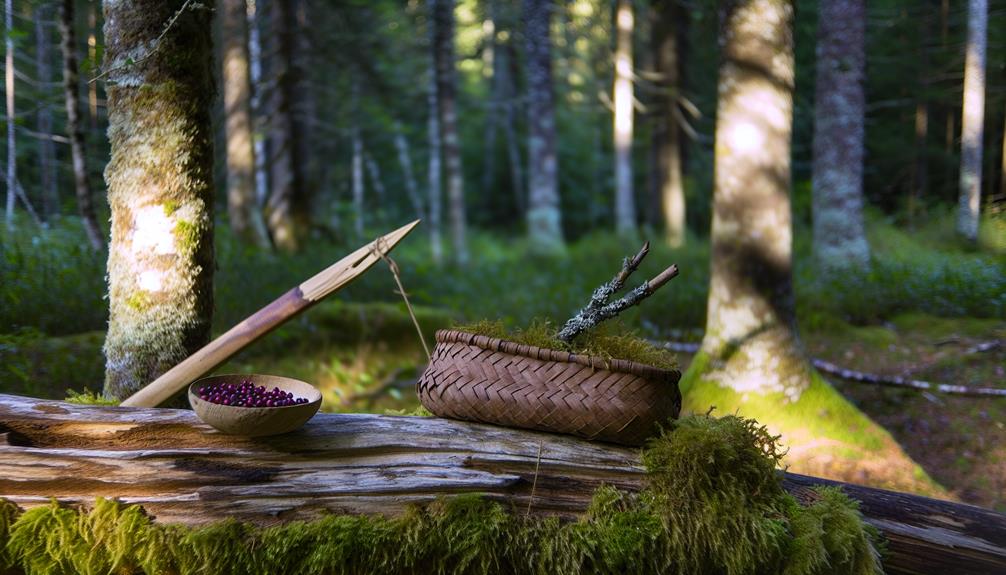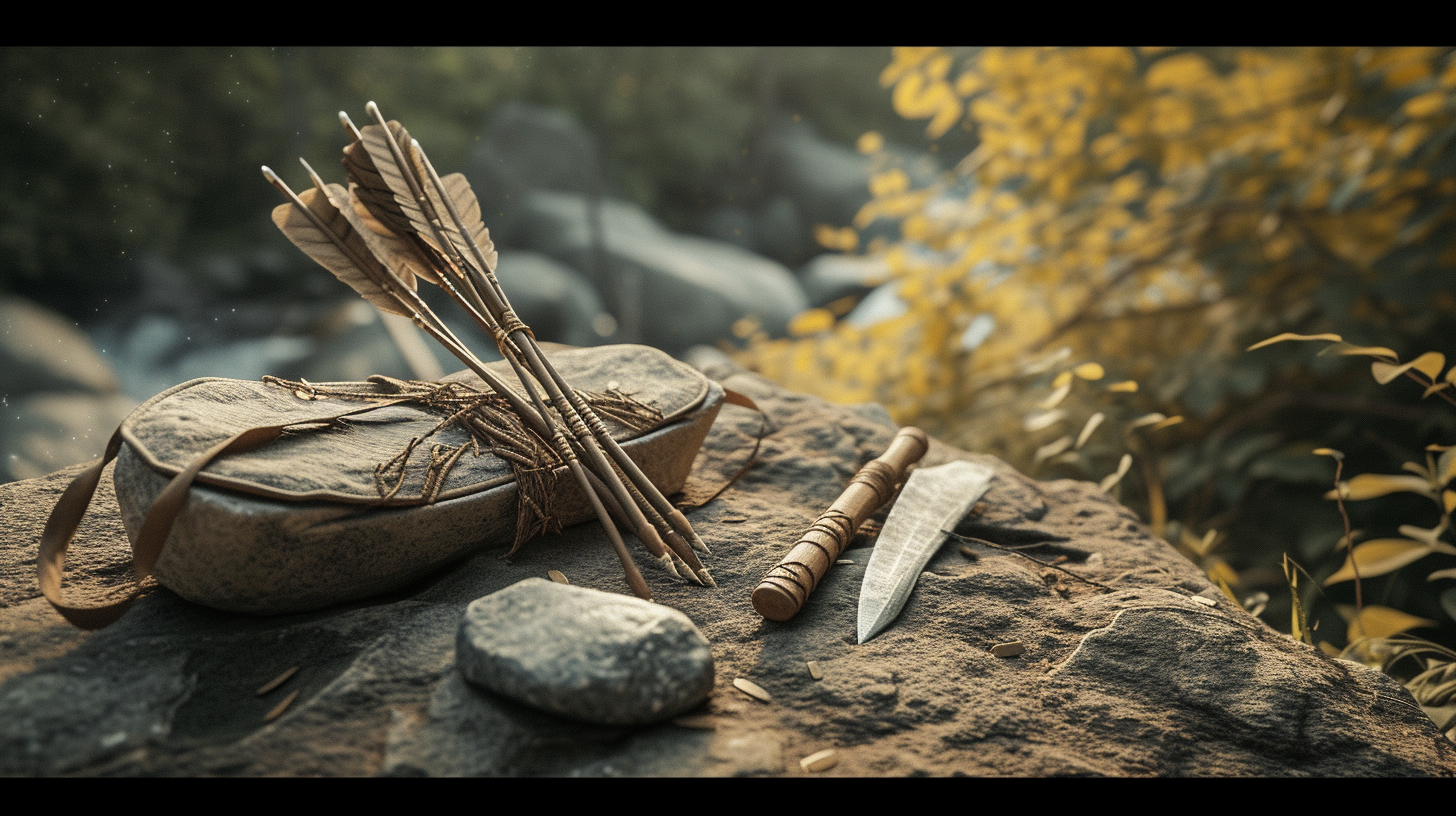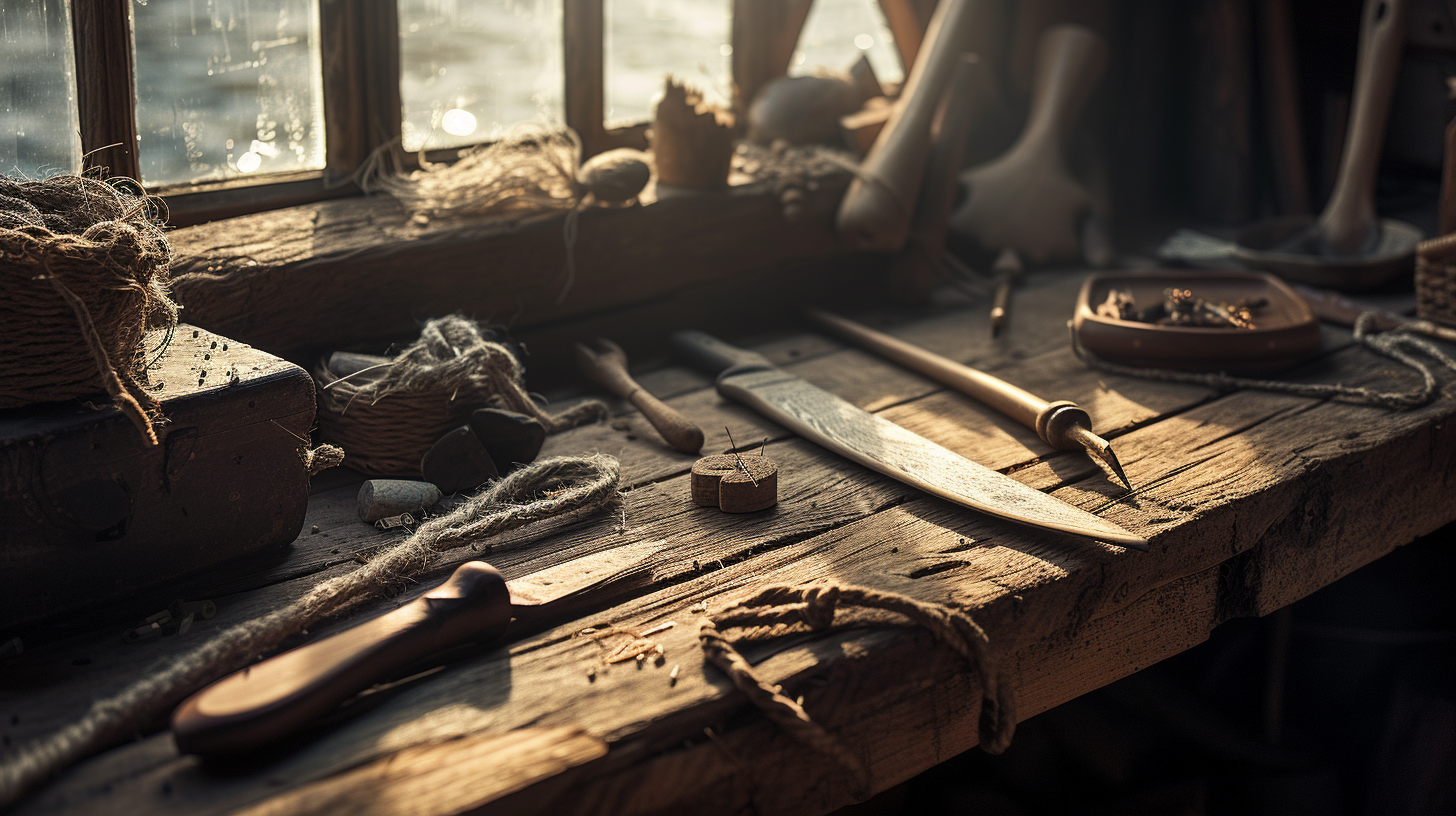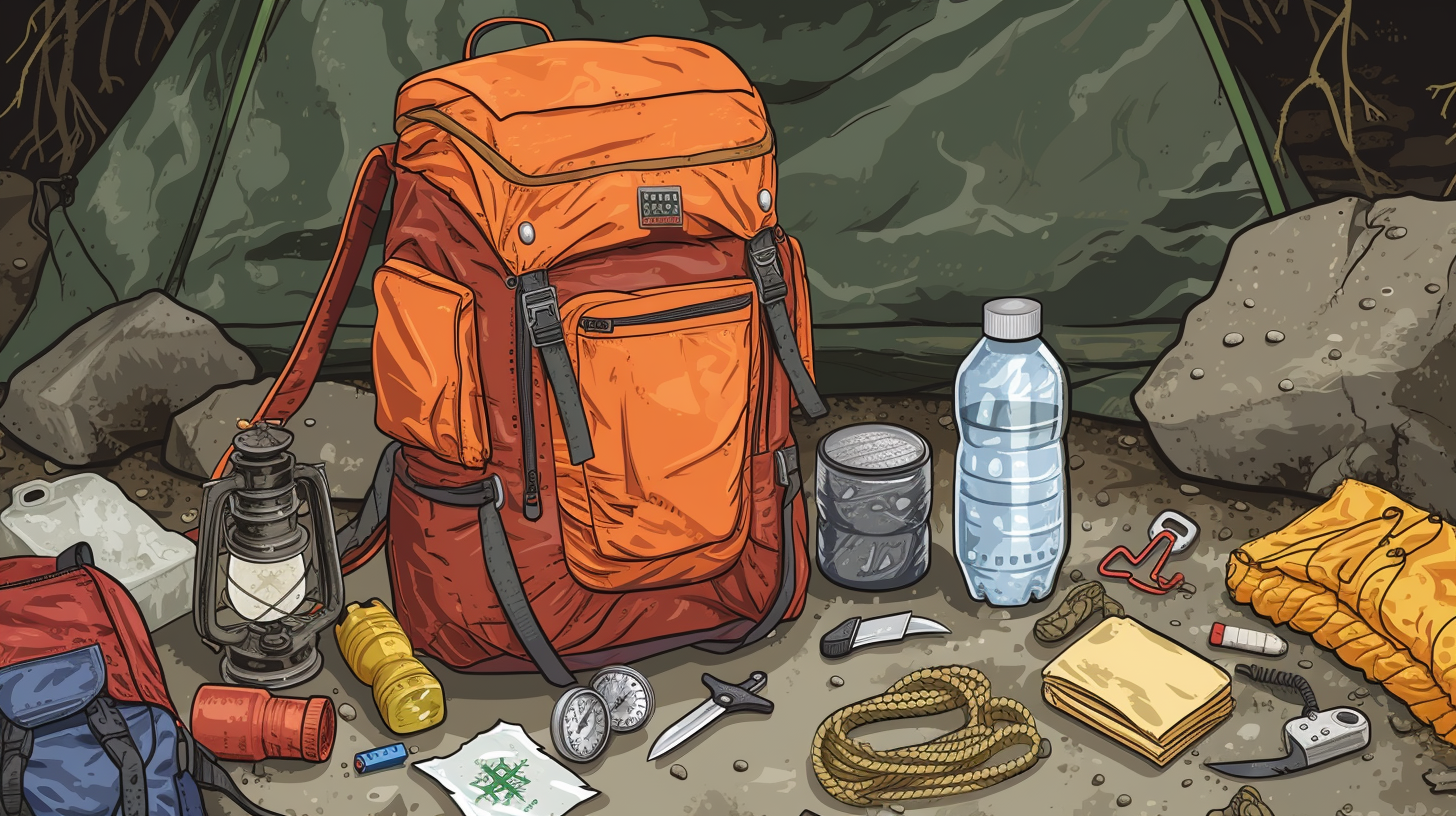You might not be aware, but the ability to create your own survival tools isn’t just for the crafty or the wilderness experts; it’s a skill set within your reach, too.
By learning how to DIY your survival gear, from water purification devices to shelters, you’re not only preparing yourself for the unexpected but also tapping into a deeply satisfying form of self-reliance.
Crafting survival weapons and understanding the basics of first aid and hygiene could mean the difference between getting by and thriving in an emergency situation.
This discussion will guide you through the essentials of making your own survival tools, the practical applications of each, and how to start with resources you likely already have.
Stick around to uncover how transforming simple items into life-saving tools can empower you and possibly save lives.
Key Takeaways
- DIY survival tools offer a cost-effective alternative to purchasing pre-made gear while allowing for customization to meet individual needs and preferences.
- Crafting essential tools enhances self-reliance, satisfaction, and increases chances of thriving in survival situations, empowering individuals to be prepared for the unexpected.
- Water purification methods such as boiling, homemade filters, solar stills, and DIY charcoal filters ensure access to clean drinking water in survival scenarios.
- Crafting survival weapons and constructing DIY shelters using natural resources increases resilience, survival chances, and provides protection from the elements. Additionally, DIY first aid and hygiene solutions are crucial in the absence of conventional medical supplies and sanitation facilities.
Essential Tools Overview
Understanding the basics, you’ll find that creating DIY survival tools isn’t only cost-effective but also allows for customization to meet your specific needs. When you’re learning how to make your own survival gear, the process begins with identifying essential Survival Tools. Making a survival kit tailored for your unique situation can significantly increase your chances of thriving in a survival situation.
DIY survival gear can range from a DIY Bow for hunting to DIY water filters for clean drinking water. The beauty of DIY is that it’s easy to make these tools with a bit of know-how and the right materials. For instance, a DIY fishing kit can be as simple as a line and hook, but knowing how to put it together can make all the difference.
The key to success in making your own survival tools lies in selecting the right materials and mastering basic crafting techniques. With these skills, you can easily create essential tools that are both reliable and suited to your needs. Whether it’s for a planned adventure or an unexpected emergency, your DIY gear will be ready to help you survive and thrive.
Water Purification Methods
To ensure your survival, it’s crucial to know how to purify water, making it safe to drink through various methods. In a survival scenario, boiling water is a straightforward way to kill pathogens, making it safe for consumption. But, when you’re on the move or lack a heat source, other DIY methods come into play.
You can use a portable water filter, but crafting a homemade water filter from natural materials is a valuable skill. A simple DIY filter involves a plastic bottle, some gravel, sand, and charcoal, layering these materials to remove contaminants as the water passes through. This method doesn’t kill bacteria or viruses, so it’s best used in conjunction with boiling or chemical treatments.
In situations where you can’t make a fire or need a more passive method, constructing a solar still is an effective way to purify water through condensation. All you need is some plastic sheeting, a container, and sunlight.
For improving the taste and further purifying running water, a DIY charcoal filter is a practical solution you can make with just charcoal and a container. Each of these methods can be a lifesaver in survival situations, ensuring you have access to clean water.
Crafting Survival Weapons
After mastering water purification, it’s vital you learn how to craft survival weapons for both protection and hunting. The wilderness demands not only resilience but also creativity, especially when it comes to finding things to eat. Let’s delve into how you can make one, or more, survival weapons using materials you might find in your surroundings.
- Bow and Arrow: Using wood for the bow and plant fibers for the string, you can craft a bow and arrow. This classic tool isn’t just for hunting small animals but can also be a means of self-defense.
- Survival Spear: A sturdy stick sharpened at one end makes a reliable spear. It’s straightforward yet effective for fishing or hunting, providing you with necessary sustenance.
- Survival Knife: Perhaps the best knife you can have is one you’ve made yourself. Whether it’s from stone or bone, a crafted survival knife can help you in crafting other survival weapons, making fishing hooks, and preparing food.
While a pocket knife is handy, learning the art of crafting survival weapons enhances your chances in the wilderness, turning natural resources into allies in your quest for survival.
DIY Shelter Construction
Once you’ve equipped yourself with survival weapons, it’s crucial to learn how to construct a shelter that’ll shield you from the harsh elements. Building a shelter can be simple yet effective if you prioritize the right techniques. For instance, a debris hut offers excellent insulation and protection, utilizing natural materials like branches and leaves. It’s a prime example of using what’s available to you.
If you’re looking for something a bit more temporary, crafting a tarp shelter can provide quick protection from adverse weather. It’s about making the most with the least, ensuring you’re safe and dry. For those who aim to elevate their survival skills, constructing a tree platform can offer both safety and an excellent vantage point.
But what about warmth? Knowing how to make a fire is essential. With tools using everyday items, like cinder blocks and vegetable oil, you can start a fire without traditional means. A brick rocket stove, for instance, is a DIY solar project that’s not only efficient for cooking but also for heating.
First Aid and Hygiene Solutions
Equipping yourself with DIY first aid and hygiene solutions is crucial for maintaining health and safety in survival situations. In the wild, you mightn’t have access to conventional medical supplies or sanitation facilities, but with some ingenuity, you can create effective alternatives. Here’s how to make your own tools and remedies, ensuring you’re prepared for anything.
- Homemade Hand Sanitizer: When soap and water aren’t available, keeping your hands clean is vital to prevent the spread of germs. Use a mixture of perfume or herbal tinctures as a base to create your sanitizer. This simple solution can be a lifesaver when you need to eat in order, ensuring your hands are germ-free.
- DIY Activated Charcoal: Activated charcoal is a versatile substance, great for treating ailments and purifying water. Making a fire and using burnt wood or coconut shells, you can create this charcoal. It’s essential for situations where you need to use natural resources for survival.
- Butterfly Bandages from Plastic Bottles: Injuries requiring closure can be managed with DIY butterfly bandages cut from plastic bottles. This method is especially useful when a knife is your only tool, providing a makeshift solution to prevent infection and promote healing.
Combining these DIY first aid and hygiene solutions with your survival skills, like making a fire or using a solar charger, ensures you’re well-prepared for any challenge.
DIY Survival Tool Ideas
These DIY survival tools can be crafted with minimal resources and are invaluable in various survival scenarios.
- Fire Starter: Create one using cotton balls soaked in petroleum jelly.
- Water Filter: Assemble using gravel, sand, charcoal, and a plastic bottle.
- Survival Spear: Sharpen a long stick or attach a knife to a pole.
- Fish Traps: Crafted using bottles or natural materials like branches.
- Bow and Arrow: Made from flexible wood, string, and sharpened sticks or scrap metal.
- Solar Still: For distilling dirty water or saltwater using the sun’s heat.
- Tin Can Stove: Using a tin can, alcohol, and a metal wire for a makeshift stove.
- Rope or Cordage: Twisting or braiding strips of bark or plant fibers.
- Signal Mirror: Polishing a metal surface to a high shine for signaling.
- Snare Traps: Using wire, string, or even shoelaces to catch small game.
- Shelter: Utilizing natural materials or tarps for emergency shelter.
- Stone Knife: Flintknapping stones to create a cutting edge.
- Hand Drill for Fire Starting: Using wood sticks and kindling to start a fire.
- Paracord Bracelet: Weaving paracord into a wearable survival tool.
- Homemade Lantern: Using a can, candle, and wire to make a portable light source.
- Waterproof Matches: Coating matches in wax to make them waterproof.
- Sling: For hunting small game, made from a Y-shaped stick and elastic material.
- Emergency Blanket: Crafting one using reflective materials like Mylar sheets.
- Survival Whistle: Carved from wood or fashioned from metal for emergency signaling.
- Duct Tape Water Bottle Holder: Creating a carrier for a water bottle from duct tape.
Conclusion
Absolutely, you can DIY and craft your own survival tools. With a bit of creativity and some basic skills, you’re capable of purifying water, constructing shelters, and even creating weapons.
Don’t forget the importance of knowledge in first aid and maintaining hygiene to keep you safe and healthy. It’s all about leveraging what you have and what you know.
So, take the time to learn and practice. Your survival could depend on these vital skills one day.






